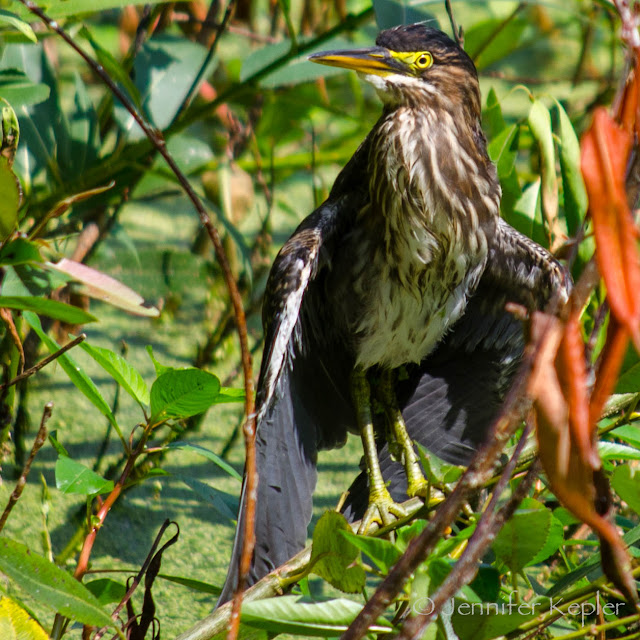It's that time of year where shore birds are on the move from their Northern breeding grounds, heading South for the winter. Ew, are we already talking about winter? It's hard to imagine winter when it was close to 90 degrees Fahrenheit today, but birds are on the move while food is abundant to fuel them on their journey, so as far south as Tierra Del Fuego (thats the most southern tip of South America).
I headed over to Jamaica Bay Wildlife Refuge in Queens to see some birds, and scope out the East pond, with plans to don some rubber boots and go for a walk along its shores. The pond is man made and water levels are controlled, seasonally dropping the level for shorebirds arriving in late August to expose mud flats for them to feed on. It also exposes a shore line to hike, if you don't mind some super stanky mud. The water is currently just a notch below neon green, so I can only imagine the funk that could cling to any outerwear.
I also carried my larger lens on my cross body sling I bought and did well, despite its weight. I also toted my mono pod along to help with photos and also as a possible self defense weapon, as recently a young woman disappeared in the area, so who knows who is lurking around. Anyway, the point was I found a comfy way to walk around with my gear.
I am satisfied with my visit, I went around noon so it was a lot hot, but the birds were still active on the East Pond. I can see why going for the haul around the pond could be rewarding, as I spotted a lot of birds through my binoculars but could not easily ID.
Anyway, enjoy...
 |
| On the East Side trails, cicadas spooked at every turn. This one landed for a picture though. I like his little eye. What a cute, drunk-flying insect :) |
 |
| I arrived to a large group birding the end of one trail that meets the pond. It was a little too crowded for my taste, but I got a good look at a spotted sandpiper (above) and least sandpiper (not shown). |
 |
| Then I ventured to the bird blind on the East Pond and had it all to myself. And a group of 4 least sandpipers flew in and gave me some good views from behind the blind. |
 |
| I also got some good views of a spotted sandpiper who also joined in at the area in front of the blind. |
 |
| There is usually very few chances to say a bird came too close to grab a good photo, but with the 200-500mm lens, the birds came too close as I hid behind the blind. |
 |
| What a handsome little sandpiper. |
 |
| I ventured to the "short walk" side of the West Pond and got some good looks at a peregrine falcon, who is probably having an all you can eat buffet while these shorebirds are in town. |
 |
| This is one of two peregrines I saw. This one I think is male, the other I saw was far larger, and I presume the female. |
 |
| I love bird eye lids and how they close from the bottom up... |
 |
| An osprey bringing home the bacon... err, bunker. The nests are empty and the kids all grown and fledged. Osprey will soon be on the move to warmer climes for the winter, but until then, they will be hunting and eating, fattening up for a long flight. |
 |
| A lucky shot of a house wren before it bolted out of sight. |

























































